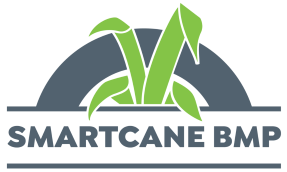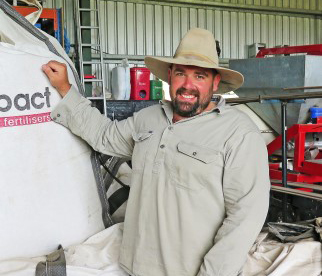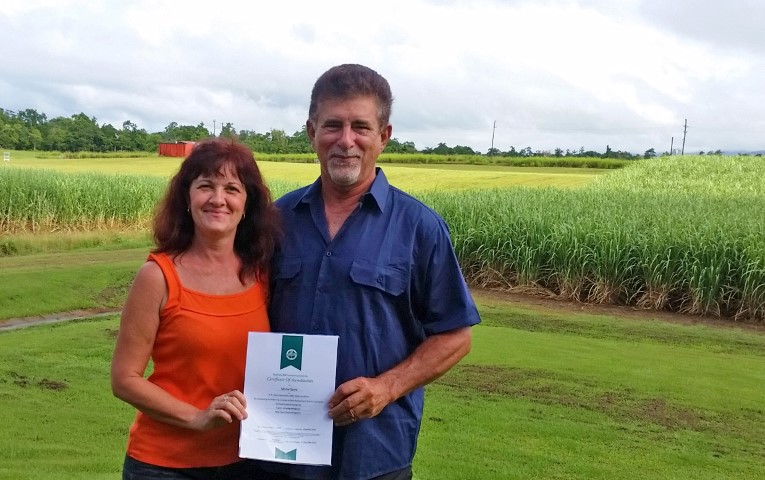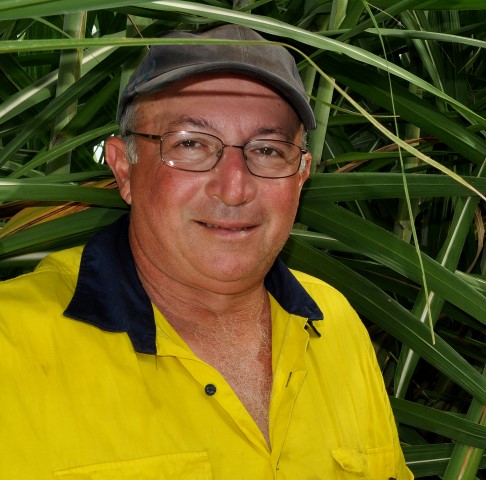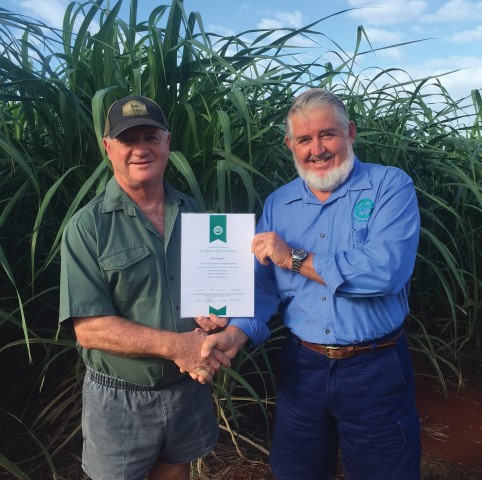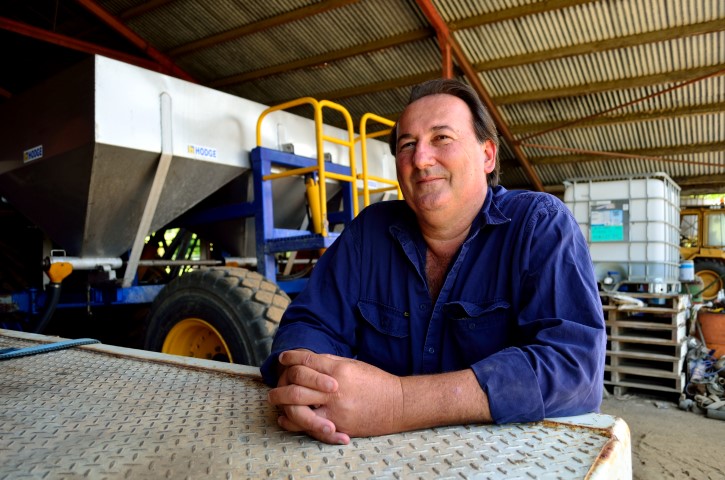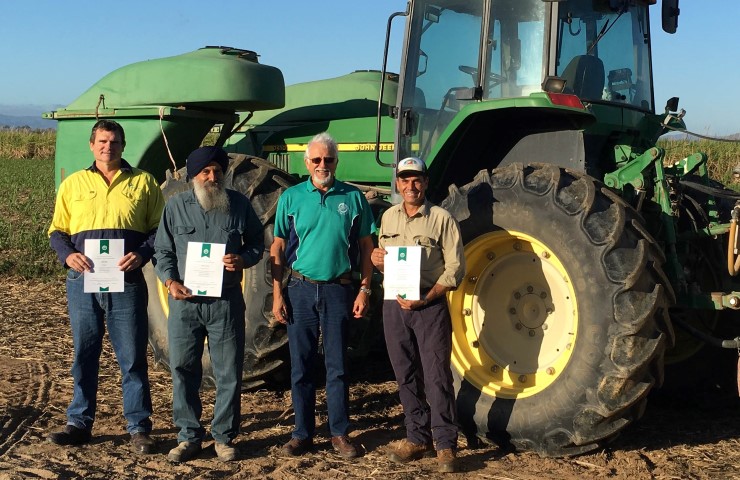Damien and Jodie Borg are relatively new to the lifestyle and business of cane farming as independent adults and as such, they are planning to do everything right on their Plane Creek district farm.
That’s why they’ve gained accreditation for their business, Borg Family Farming, in the three core modules of Smartcane BMP.
While Damien grew up on a cane farm with parents Kevin and Anna-Maria, he chose as a young adult to pursue a trade and work as a diesel fitter in the mining industry. He decided to move back to agriculture for family and lifestyle.
“We got tired of the mining lifestyle and being away from home – I wanted to spend more time with my family,” Damien said. He and Jodie have two small children.
Once the decision was made, Damien leased a 180 hectare dryland property in 2010.
“We designed the layout right from the start to suit farming, keeping harvesting practices and drainage in mind,” he said. “We are now into our fourth season and this foresight has well and truly paid off in terms of the farm’s efficiencies.”
As a part of a growing younger set taking up cane growing or returning to it, Damien is typical in that he is keen to be proactive in his pursuit of the business’s future profitability and sustainability.
“I’ve received a lot of guidance from neighbouring farmers, and of course my father who is a third generation cane grower,” he says.
Deciding to sign up for the Smartcane BMP (Best Management Practice) program was easy.
“BMP today is just a part of being a farmer,” Damien says. “The mining industry is steeped in regulations to balance the protection of workers and the viability of the business while maintaining and protecting the environment – I see no difference with being a cane farmer as these ends are the same we want to achieve.
“With BMP it’s not just about what you are doing today. A lot of it is about where we want to be in the future – if there is a premium to be paid on accredited sugar, I want to be a part of that.”
Damien admits to being a bit daunted at first by the Smartcane BMP program.
“It has become a lot easier and the program has been even further streamlined. It’s also really comforting to know that there is a lot of support along the way.
“One of the things I do appreciate now is the amount of thought the program stimulates – for instance, the program has really validated the Six Easy Steps for me.”
Damien has 1.85m rows across his farm, which he says is critical for controlled traffic to minimise compaction, lower costs including fuel, and for savings in time by spending much less of it in the paddock.
Cutting down on nitrogen losses and battling cane grubs is achieved with the use of granular fertiliser and Confidor, both of which are put under the ground at the same time using a double disc opener stool splitter and covered with a press wheel.
“We also have GPS guidance in all of our tractors and this increases our efficiency and accuracy including in record keeping,” Damien says.
“Our harvester operator loves it – we’re cutting harvesting losses, reducing fuel costs and saving time. He’s really impressed with the significant difference it makes.”
Damien said he had heard a few growers say they were worried about the amount of time that the Smartcane BMP program would mean spending on a computer.
“I tell them they really don’t have to be concerned because that’s not the case at all,” he says. An added bonus is that BMP doesn’t mean everyone has to farm the same way. You can still farm the way you want to within the BMP guidelines.
“Dad and I quite often have different ideas and opinions about how to do some things, but both ways are always still within BMP practices and we are both Smartcane BMP accredited,” Damien says.
“The Smartcane BMP program isn’t hard, and it may sound harsh, but the reality is that it’s our future.” As a younger farmer, Damien has his sights firmly set on that future. His goal is to expand and grow more cane.
“We’ll be hoping to expand as soon as we can,” he says. “We intend to keep on farming because we like it, and it is great lifestyle and environment in which to bring up our kids.”
While Damien grew up on a cane farm with parents Kevin and Anna-Maria, he chose as a young adult to pursue a trade and work as a diesel fitter in the mining industry. He decided to move back to agriculture for family and lifestyle.
“We got tired of the mining lifestyle and being away from home – I wanted to spend more time with my family,” Damien said. He and Jodie have two small children.
Once the decision was made, Damien leased a 180 hectare dryland property in 2010.
“We designed the layout right from the start to suit farming, keeping harvesting practices and drainage in mind,” he said. “We are now into our fourth season and this foresight has well and truly paid off in terms of the farm’s efficiencies.”
As a part of a growing younger set taking up cane growing or returning to it, Damien is typical in that he is keen to be proactive in his pursuit of the business’s future profitability and sustainability.
“I’ve received a lot of guidance from neighbouring farmers, and of course my father who is a third generation cane grower,” he says.
Deciding to sign up for the Smartcane BMP (Best Management Practice) program was easy.
“BMP today is just a part of being a farmer,” Damien says. “The mining industry is steeped in regulations to balance the protection of workers and the viability of the business while maintaining and protecting the environment – I see no difference with being a cane farmer as these ends are the same we want to achieve.
“With BMP it’s not just about what you are doing today. A lot of it is about where we want to be in the future – if there is a premium to be paid on accredited sugar, I want to be a part of that.”
Damien admits to being a bit daunted at first by the Smartcane BMP program.
“It has become a lot easier and the program has been even further streamlined. It’s also really comforting to know that there is a lot of support along the way.
“One of the things I do appreciate now is the amount of thought the program stimulates – for instance, the program has really validated the Six Easy Steps for me.”
Damien has 1.85m rows across his farm, which he says is critical for controlled traffic to minimise compaction, lower costs including fuel, and for savings in time by spending much less of it in the paddock.
Cutting down on nitrogen losses and battling cane grubs is achieved with the use of granular fertiliser and Confidor, both of which are put under the ground at the same time using a double disc opener stool splitter and covered with a press wheel.
“We also have GPS guidance in all of our tractors and this increases our efficiency and accuracy including in record keeping,” Damien says.
“Our harvester operator loves it – we’re cutting harvesting losses, reducing fuel costs and saving time. He’s really impressed with the significant difference it makes.”
Damien said he had heard a few growers say they were worried about the amount of time that the Smartcane BMP program would mean spending on a computer.
“I tell them they really don’t have to be concerned because that’s not the case at all,” he says. An added bonus is that BMP doesn’t mean everyone has to farm the same way. You can still farm the way you want to within the BMP guidelines.
“Dad and I quite often have different ideas and opinions about how to do some things, but both ways are always still within BMP practices and we are both Smartcane BMP accredited,” Damien says.
“The Smartcane BMP program isn’t hard, and it may sound harsh, but the reality is that it’s our future.” As a younger farmer, Damien has his sights firmly set on that future. His goal is to expand and grow more cane.
“We’ll be hoping to expand as soon as we can,” he says. “We intend to keep on farming because we like it, and it is great lifestyle and environment in which to bring up our kids.”
